What Drives High Call Center Agent Productivity
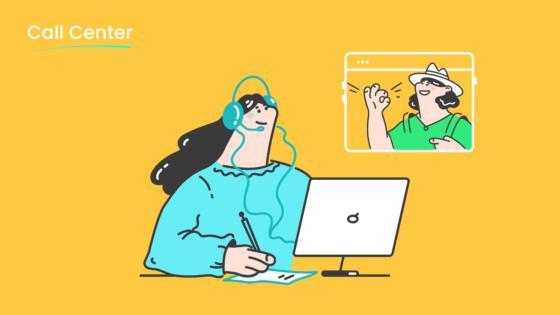
Call center agent productivity comes from a blend of motivation, advanced technology, and clear metrics. Many centers see a 50% boost in productivity and a 60% rise in engagement when leaders use recognition and gamification. Sobot call center solutions deliver stability, real-time AI insights, and unified workspaces, helping teams cut average handle time by 41% and raise first-contact resolution. Sobot AI empowers agents with actionable data, so companies can improve call center productivity and deliver better customer experiences.
Call Center Agent Productivity Defined
What Productivity Means
Call center agent productivity measures how efficiently agents handle customer interactions while maintaining high service quality. In the industry, organizations use several formulas and metrics to define this concept:
- Agent Productivity = Total Number of Calls Handled / Total Working Hours
- Net Promoter Score (NPS) = % Promoters - % Detractors
- Call Quality Score = (Sum of Evaluated Call Scores / Total Number of Evaluated Calls)
- Occupancy Rate (%) = (Call-Related Work Time ÷ Total Time Worked) × 100
- First Call Resolution (FCR) = (Number of Calls Resolved on First Contact ÷ Total Calls) × 100
Call center productivity goes beyond just numbers. It combines efficiency with the ability to deliver a positive customer experience. Agents need strong communication skills, product knowledge, and the right technology to succeed. Companies like Sobot help agents by providing unified workspaces and real-time analytics, making it easier to track and improve these metrics.
Note: Productivity is not only about speed. It also includes the quality of each customer interaction and the agent’s ability to resolve issues on the first call.
Why It Matters
High call center agent productivity leads to better business outcomes. When agents work efficiently, customers spend less time waiting and receive faster solutions. This improves customer satisfaction and loyalty. Organizations that focus on call center productivity often see higher Net Promoter Scores and lower missed-call rates.
| Metric Name | Description | Why It Matters / How to Improve |
|---|---|---|
| Missed-Call Rate | Number of calls unanswered due to agent unavailability. | High rate means lost opportunities; improve with better staffing and queue management. |
| Occupancy Rate | Time agents spend actively handling calls vs idle time. | Balanced occupancy prevents burnout and underuse; improve with forecasting and automation. |
| Customer Satisfaction Score (CSAT) | Customer feedback on agent interactions. | High CSAT indicates strong service; improve with personalized support and faster resolution. |
Real-time AI tools, such as those in Sobot’s Voice/Call Center, help agents resolve issues quickly and reduce call backlog. Recognizing agent success also boosts productivity, with nearly 78% of employees reporting higher output when recognized frequently. When companies align call center agent productivity with customer satisfaction metrics, they create a cycle of improvement that benefits both the business and its customers.
Key Metrics for Call Center Productivity
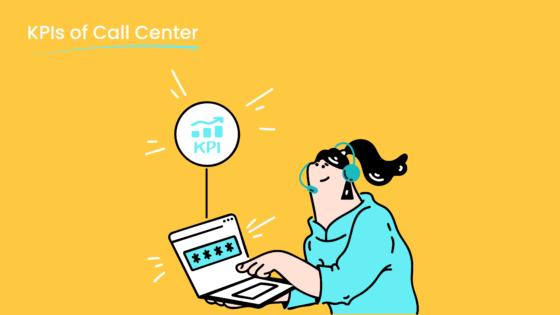
Understanding call center productivity starts with tracking the right key metrics. These agent productivity metrics help leaders measure efficiency, service quality, and customer satisfaction. By focusing on these key performance indicators, call centers can improve both operational results and customer experiences. Sobot’s Voice/Call Center platform provides real-time analytics and a unified workspace, making it easier to monitor and enhance these customer service metrics.
Average Handle Time (AHT)
Average handle time measures the total time an agent spends on a customer call, including talk time, hold time, and after-call work. This metric is a core part of agent productivity metrics and directly impacts call center productivity.
Formula:
AHT = (Total Talk Time + Total Hold Time + Total After-Call Work Time) / Total Number of Calls
For example, if an agent spends 50 minutes talking, 5 minutes on hold, and 5 minutes on follow-up for 10 calls, the average handle time is (50 + 5 + 5) / 10 = 6 minutes.
Industry Benchmark:
High-performing call centers aim for an average handle time of about 6 minutes. This benchmark balances speed with quality, ensuring agents resolve issues without rushing.
A low average handle time can signal efficiency, but if agents rush, it may hurt quality. A high AHT may mean agents spend more time solving complex problems, which can improve first-call resolution rate and customer satisfaction.
Sobot’s Voice/Call Center uses AI-powered analytics to help agents access customer data quickly, reducing time spent searching for information. Features like real-time monitoring and call routing guide agents to resolve issues faster, lowering average handle time by up to 15%. Supervisors can use live monitoring tools to assist agents during calls, further improving quality and efficiency.
First Call Resolution (FCR)
First call resolution rate is one of the most important customer service metrics. It measures the percentage of customer issues resolved during the first interaction, without the need for follow-up calls.
Formula:
FCR = (Number of Issues Resolved on First Contact / Total Number of Issues) × 100
Industry Benchmark:
A good first-call resolution rate falls between 70% and 80%. World-class centers reach 80% or higher. Rates vary by industry and call type, with complex issues like complaints having lower FCR.
| Industry | Average FCR Rate |
|---|---|
| Retail | 78% |
| Insurance | 76% |
| Energy | 71% |
| Financial | 71% |
| Technology | 65% |
| Call Center | 71% |
| Call Type | Average FCR Rate |
|---|---|
| Inquiries | 74% |
| Account Maintenance | 73% |
| Orders | 72% |
| Billing | 71% |
| Claims | 59% |
| Complaints | 47% |
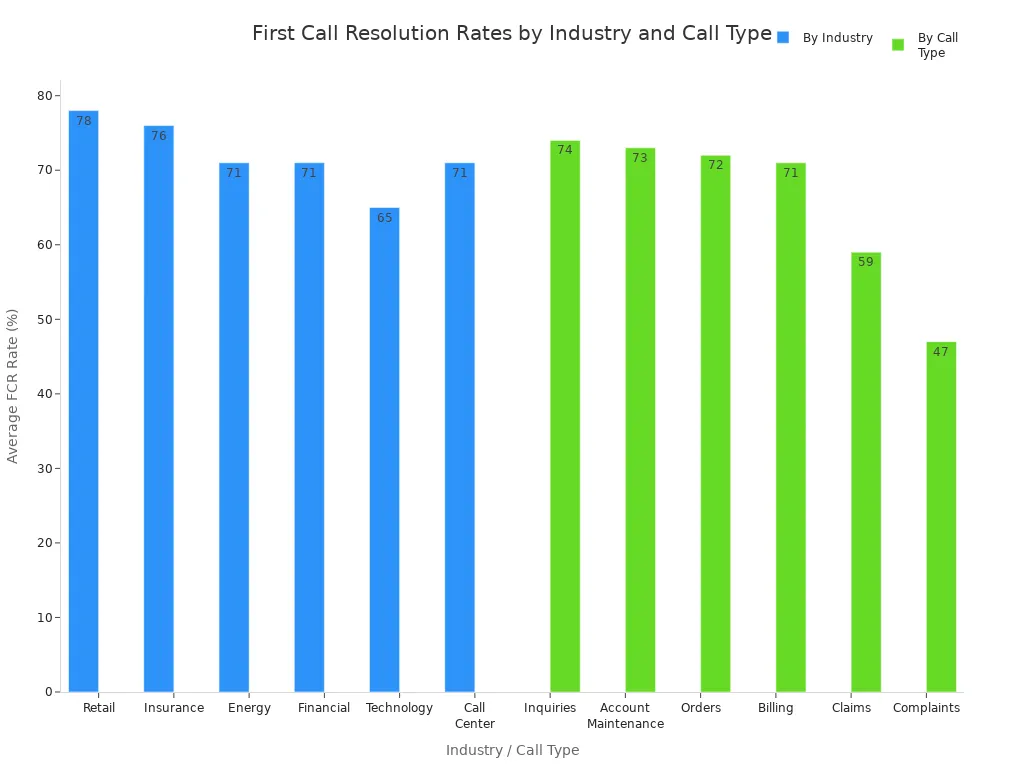
Improving the first-call resolution rate boosts customer satisfaction and reduces repeat calls. Research shows that a 1% increase in FCR can raise customer satisfaction score by 1% and net promoter score by 1.4 points. Sobot’s Voice/Call Center supports high first-call resolution rates with features like:
- Real-time monitoring tools (silent listening, whisper coaching, barging in) for supervisor support.
- Searchable call archives and metadata for quick access to past interactions.
- CRM and ticketing integration for a unified customer view.
- AI-powered voicebots that resolve routine queries, freeing agents to focus on complex issues.
These tools help agents solve problems on the first call, improving both quality and customer satisfaction.
Agent Utilization Rate
Agent utilization rate tracks how much of an agent’s shift is spent on productive tasks, such as handling calls, after-call work, and training. This metric is vital for understanding call center productivity and managing agent workloads.
Formula:
Agent Utilization Rate = (Total Time on Productive Tasks / Total Available Work Hours) × 100
For example, if an agent works 8 hours and spends 6 hours on productive tasks, the utilization rate is (6 / 8) × 100 = 75%.
Industry Benchmark:
An optimal agent utilization rate ranges from 75% to 85%. Rates below this range may indicate inefficiency, while higher rates can lead to burnout and lower quality.
Tip: Monitor agent utilization over different shifts and days to balance productivity and well-being.
Sobot’s unified workspace and automated workflows help agents stay focused on high-value tasks. Real-time analytics identify periods of low or high utilization, allowing managers to adjust staffing and schedules for maximum efficiency.
Customer Satisfaction (CSAT)
Customer satisfaction score is a direct measure of how happy customers are with their service experience. This key metric is collected through post-call surveys, where customers rate their satisfaction on a scale (such as 1-5 or 1-10).
Formula:
CSAT = (Number of Satisfied Responses / Total Responses) × 100
For example, if 80 out of 100 customers rate their experience as “satisfied” or “very satisfied,” the customer satisfaction score is 80%.
Industry Benchmark:
The average customer satisfaction score for call centers is about 78%. Scores above 75% are considered good, while scores above 85% are world-class.
High customer satisfaction scores signal strong service quality and drive loyalty. Low scores highlight areas for improvement.
Sobot’s Voice/Call Center leverages AI-powered chatbots and predictive analytics to monitor customer interactions in real time. The platform detects emotional cues and root causes of dissatisfaction, enabling agents to personalize support and resolve issues quickly. Real-time dashboards display customer satisfaction scores, repeat call rates, and other key metrics, helping teams respond to problems before they escalate.
Service Level
Service level is a key performance indicator that measures how quickly agents answer incoming calls. It reflects the call center’s ability to meet customer expectations for timely service.
Formula:
Service Level = (Number of Calls Answered Within Target Time / Total Calls) × 100
Industry Benchmark:
The standard service level in the industry is answering 80% of calls within 20 seconds, known as the 80/20 rule. Some research suggests that answering within 120 seconds does not harm customer satisfaction, but most centers aim for the 80/20 target to ensure high quality.
Maintaining a strong service level reduces missed calls and improves customer satisfaction. It also supports other customer service metrics, such as average speed of answer and first-call resolution rate.
Sobot’s Voice/Call Center uses intelligent IVR, smart call routing, and global number availability to help teams meet service level targets. Real-time analytics track performance, alerting managers to spikes in call volume or delays. This proactive approach ensures consistent quality and a positive customer experience.
Key Metrics Table
| Metric Name | Description | Industry Benchmark / Target |
|---|---|---|
| First Call Resolution (FCR) | Percentage of customer issues resolved in a single interaction | 70-80% or above |
| Average Handle Time (AHT) | Average time spent on a call including talk, hold, and transfer times | 5-6 minutes |
| Customer Satisfaction (CSAT) | Customer feedback score measuring satisfaction with recent interaction | 80% to 90%+ |
| Net Promoter Score (NPS) | Measures likelihood of customers recommending the business | 30+ |
| Average Speed of Answer | Average time taken to answer a call | 20 seconds or less |
| Call Abandonment Rate | Percentage of calls ended by customers before being connected to an agent | Below 5% |
| Customer Effort Score (CES) | Measures how much effort customers expend to resolve issues or interact | Lower scores are better |
Tracking these key metrics gives call centers a clear view of agent productivity metrics and overall call center productivity. Sobot’s Voice/Call Center provides the tools needed to monitor, analyze, and improve these customer service metrics, ensuring high quality and customer satisfaction at every step.
Drivers of Contact Center Productivity
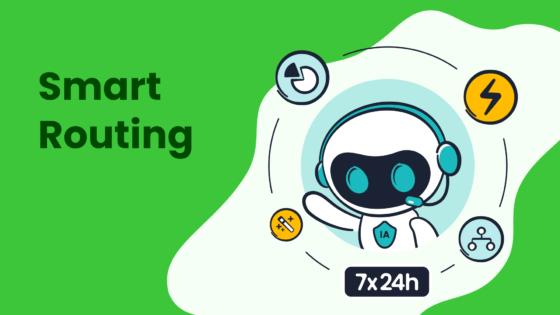
Agent Motivation
Agent motivation stands as a core driver of contact center productivity. Motivated agents show higher engagement, which leads to better performance and improved quality in every customer interaction. Research from Gallup and Harvard Business Review shows that flexible work arrangements, wellness programs, and supportive environments reduce stress and turnover. Empowered agents who have autonomy make decisions faster and resolve more issues on the first call. Companies like Zappos and Google have demonstrated that meaningful customer connections foster intrinsic motivation, which boosts job satisfaction and emotional resilience. When agents feel valued, they deliver higher quality service and contribute to greater agent productivity.
- Flexible work schedules increase agent engagement and reduce turnover.
- Wellness programs lower stress, improving focus and retention.
- Empowerment raises job satisfaction and first call resolution rates.
- Strong customer connections build emotional resilience and motivation.
Training and Support
Effective training and support programs play a vital role in contact center productivity. Comprehensive training, including video-based learning and real-time coaching, helps agents develop skills and retain knowledge. AI-powered call routing matches customers with the most qualified agents, reducing average handle time and increasing first call resolution. Studies show that a 15% reduction in handle time can improve agent productivity by up to 20%. Ongoing feedback and open communication channels keep agent engagement high. When agents receive targeted coaching and continuous support, they deliver higher quality service and maintain consistent performance.
- Continuous training covers both routine and complex scenarios.
- Real-time AI coaching improves first call resolution and customer satisfaction.
- Open feedback channels show agents their input matters, increasing engagement.
Technology and Tools (Sobot)

Advanced technology and tools, such as Sobot’s Voice/Call Center and Omnichannel Solution, transform contact center productivity. Sobot’s unified workspace consolidates all customer information and channels, allowing agents to access full context instantly. AI-driven automation handles repetitive tasks like ticket tagging and CRM updates, freeing agents to focus on complex issues. Real-time agent assist tools offer next-best actions and knowledge articles, reducing search time and cognitive load. Companies using Sobot report up to a 6X efficiency boost and customer satisfaction rates as high as 97%. Multilingual support and AI-powered chatbots resolve 80% of customer issues instantly, eliminating wait times and improving quality. Supervisors monitor real-time metrics, optimize workloads, and provide instant feedback, ensuring high agent engagement and productivity.
Unified workspaces and AI-driven automation remove friction, speed up response times, and help agents deliver consistent, high-quality service—key factors in driving contact center productivity.
Strategies to Improve Call Center Agent Productivity
People-Focused Approaches
Organizations that prioritize people-focused strategies see measurable gains in call center agent productivity. Regular scenario-based training builds agent confidence and sharpens skills. Setting clear and realistic goals, both for individuals and teams, aligns performance with customer satisfaction metrics like first call resolution. A centralized knowledge base allows agents to retrieve information quickly, reducing average handle time. Companies also motivate agents by offering mentorship programs, career paths, and recognition programs. Two-way feedback and a focus on agent well-being, such as flexible schedules and short breaks, help prevent burnout and keep engagement high.
Investing in agent development and well-being leads to higher motivation, better service, and improved agent productivity metrics.
Technology-Focused Approaches (Sobot)
Modern technology drives call center productivity to new heights. Sobot’s Voice/Call Center and Omnichannel Solution equip agents with AI-powered tools, unified workspaces, and real-time analytics. Features like AI Copilot reduce agent workload by 60%, while AI Agents provide 24/7 customer service. Sobot’s platform supports multiple channels and integrates easily with existing systems, streamlining operations and improving agent utilization rates. Companies using Sobot have reported a 234% return on investment and a 35% increase in Net Promoter Score.
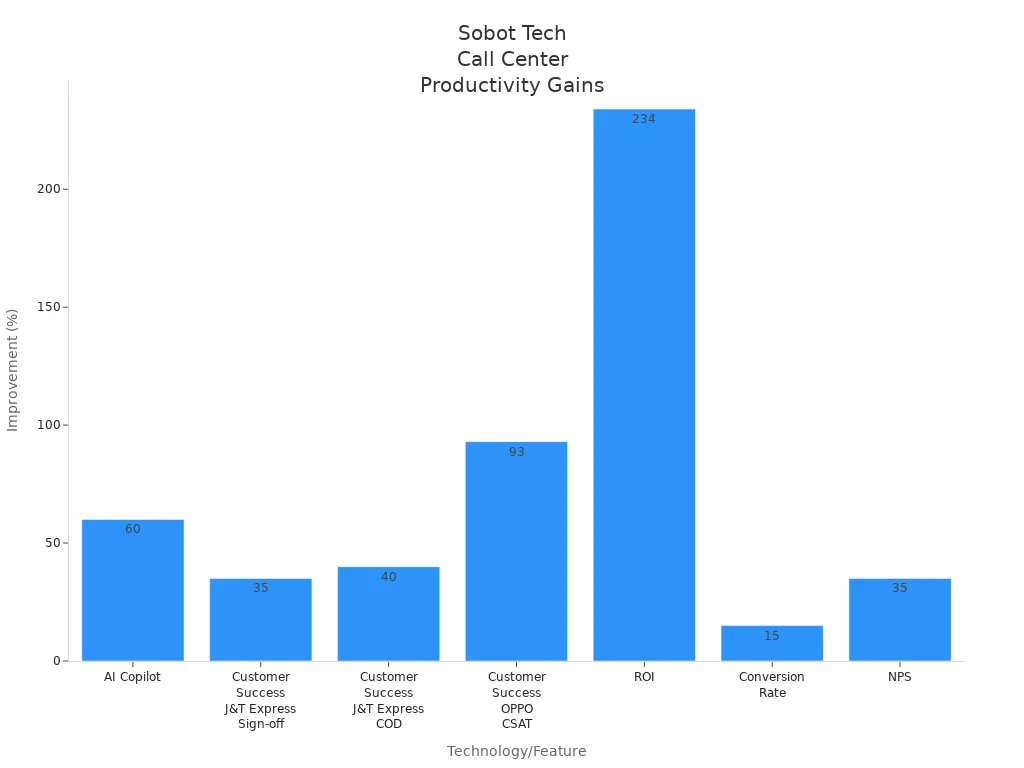
Setting Clear Goals
Clear, specific, and measurable goals help agents focus their efforts and understand expectations. Using SMART goals (Specific, Measurable, Achievable, Relevant, Time-bound) increases engagement and accountability. Aligning these goals with business objectives boosts motivation and productivity. Gartner research shows that clear goal setting can improve employee performance by up to 22%. Transparent dashboards and regular evaluations reinforce progress and keep agents motivated to achieve their targets.
Continuous Feedback
Continuous feedback transforms quality monitoring into a collaborative process. Agents receive specific, actionable advice that helps them improve performance. Personalized development plans address individual strengths and weaknesses, leading to lasting improvements in call center agent productivity. Regular feedback sessions, linked to key metrics like first call resolution and customer satisfaction, empower agents to adapt and grow. This approach builds a culture of ownership and sustained progress, ensuring that productivity gains endure over time.
Real-World Impact: Sobot Case Study
Weee! Success Story
Weee! stands as America’s largest online Asian supermarket. The company faced challenges with its customer service operations. Its team needed to handle thousands of daily orders and support a diverse customer base. The existing call center system struggled with inflexible IVR menus, language barriers, and time zone differences. These issues slowed down agents and reduced call center agent productivity.
Sobot provided a solution with its Voice/Call Center platform. The system offered a flexible IVR, multilingual support, and a unified workspace. Agents could now manage calls, tickets, and customer data in one place. Sobot’s AI-powered tools helped agents resolve issues faster and improved first call resolution rates. The platform also supported integration with Weee!’s ticketing system, which reduced the need for agents to switch between different systems.
“Sobot’s Voice/Call Center transformed our customer service. Our agents became more efficient, and our customers noticed the difference.” — Weee! Operations Team
Results and Benefits
The impact of Sobot’s solution on call center agent productivity was clear and measurable. Weee! saw a 20% increase in agent efficiency. The average resolution time dropped by 50%. Customer satisfaction scores reached 96%, far above the industry average. Agents could handle more calls and resolve issues on the first contact.
Key benefits included:
- Flexible IVR menus that matched customer needs.
- Multilingual templates for better communication.
- Unified workspace for seamless agent workflow.
- Real-time analytics to track call center productivity metrics.
| Metric | Before Sobot | After Sobot |
|---|---|---|
| Agent Efficiency | Baseline | +20% |
| Resolution Time | Baseline | -50% |
| Customer Satisfaction | 80% | 96% |
Sobot’s Voice/Call Center helped Weee! deliver faster, higher-quality service. The case shows how the right technology can drive call center agent productivity and customer satisfaction. For more details, visit Sobot’s official case study.
Tracking key metrics and combining motivated agents with advanced technology drives call center agent productivity. Companies see the best results when they:
- Monitor metrics like FCR, AHT, CSAT, and NPS with real-time dashboards.
- Invest in agent training and create a positive work environment.
- Use AI, automation, and unified platforms such as Sobot to streamline workflows.
| Benefit | With Sobot | Without Sobot |
|---|---|---|
| Productivity Improvement | Up to 400% boost | Baseline |
| Customer Satisfaction | Up to 95% | Lower |
Regular reviews and clear goals help teams achieve ongoing success.
FAQ
What is the most important metric for call center agent productivity?
Many experts consider First Call Resolution (FCR) the top metric. High FCR means agents solve customer issues on the first call. Sobot’s Voice/Call Center helps teams track FCR in real time, improving both agent productivity and customer satisfaction.
How does technology improve call center agent productivity?
Technology like Sobot’s unified workspace and AI-powered tools streamlines workflows. Agents access customer data instantly and automate repetitive tasks. This reduces average handle time by up to 15%. Companies see higher call center agent productivity and better service quality.
Why should businesses track call center agent productivity regularly?
Regular tracking helps managers spot trends and address issues early. For example, Sobot’s real-time analytics dashboard shows key metrics like AHT and CSAT. This allows teams to adjust quickly and maintain high call center agent productivity.
Can Sobot’s solutions support remote call center agents?
Yes. Sobot’s cloud-based platform supports remote work with mobile compatibility and secure data transfer. Agents can access the system from anywhere, ensuring consistent call center agent productivity across locations.
What are some quick ways to boost call center agent productivity?
Companies can offer scenario-based training, set clear goals, and use AI-powered automation. Sobot’s Voice/Call Center provides real-time feedback and unified workspaces. These steps help agents resolve issues faster and increase call center agent productivity.
Tip: Regular recognition and feedback can increase agent engagement by up to 60%, leading to higher productivity.
See Also
Enhancing Call Center Efficiency Through Effective Monitoring Techniques
Essential Strategies For Managing Call Center Quality Successfully
Understanding The Efficient Operation Of Call Center Automation
